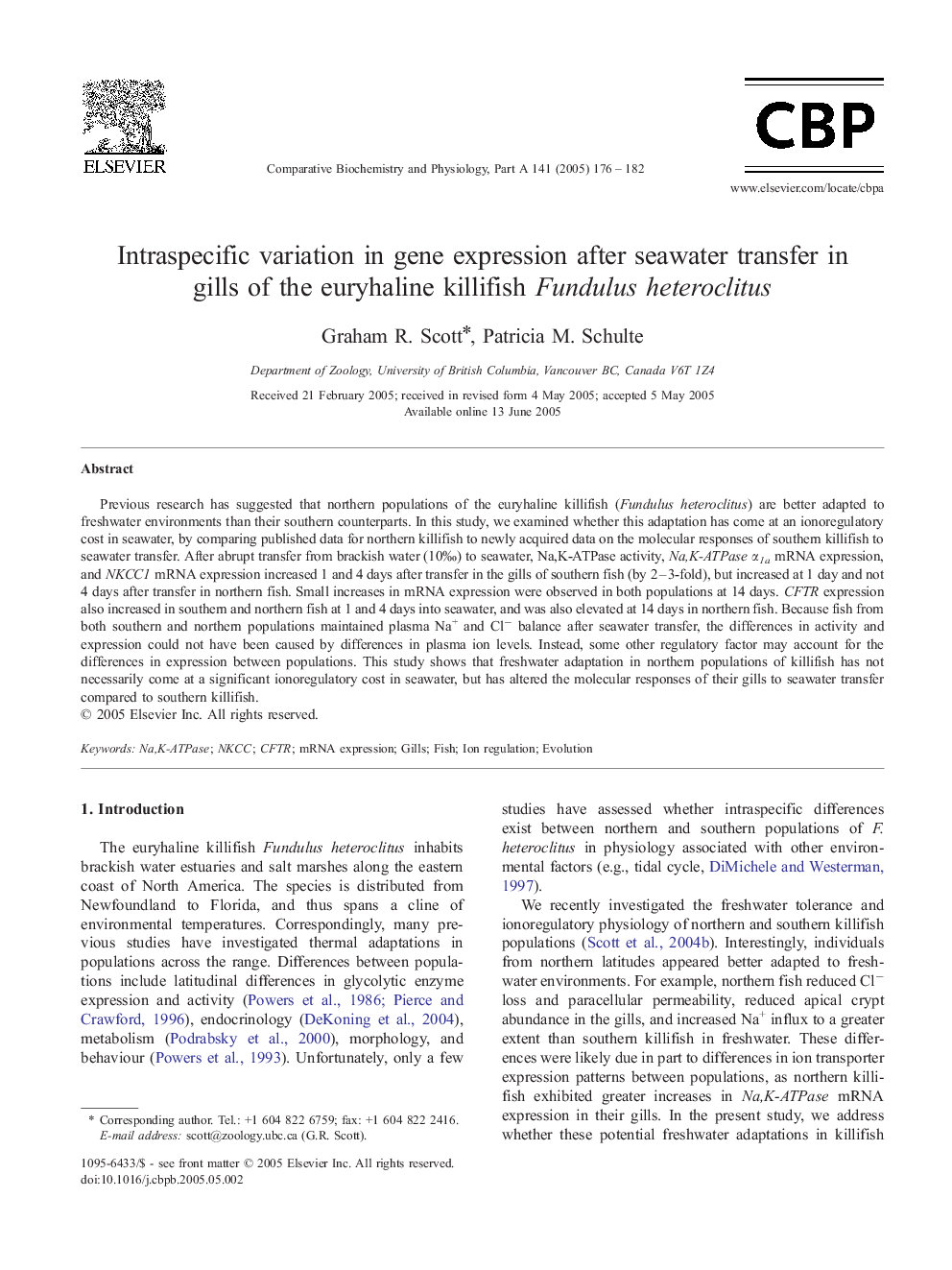| Article ID | Journal | Published Year | Pages | File Type |
|---|---|---|---|---|
| 10819198 | Comparative Biochemistry and Physiology Part A: Molecular & Integrative Physiology | 2005 | 7 Pages |
Abstract
Previous research has suggested that northern populations of the euryhaline killifish (Fundulus heteroclitus) are better adapted to freshwater environments than their southern counterparts. In this study, we examined whether this adaptation has come at an ionoregulatory cost in seawater, by comparing published data for northern killifish to newly acquired data on the molecular responses of southern killifish to seawater transfer. After abrupt transfer from brackish water (10â°) to seawater, Na,K-ATPase activity, Na,K-ATPase α1a mRNA expression, and NKCC1 mRNA expression increased 1 and 4 days after transfer in the gills of southern fish (by 2-3-fold), but increased at 1 day and not 4 days after transfer in northern fish. Small increases in mRNA expression were observed in both populations at 14 days. CFTR expression also increased in southern and northern fish at 1 and 4 days into seawater, and was also elevated at 14 days in northern fish. Because fish from both southern and northern populations maintained plasma Na+ and Clâ balance after seawater transfer, the differences in activity and expression could not have been caused by differences in plasma ion levels. Instead, some other regulatory factor may account for the differences in expression between populations. This study shows that freshwater adaptation in northern populations of killifish has not necessarily come at a significant ionoregulatory cost in seawater, but has altered the molecular responses of their gills to seawater transfer compared to southern killifish.
Related Topics
Life Sciences
Biochemistry, Genetics and Molecular Biology
Biochemistry
Authors
Graham R. Scott, Patricia M. Schulte,
